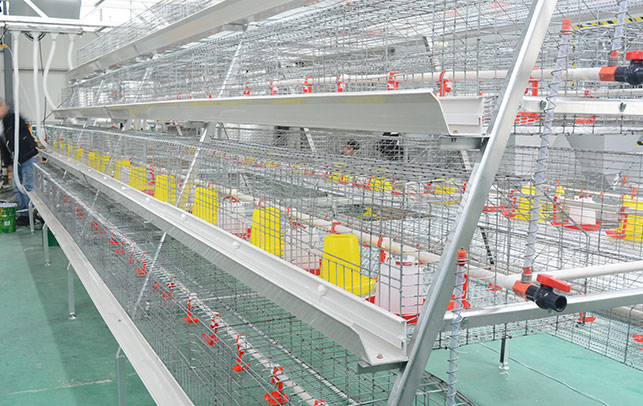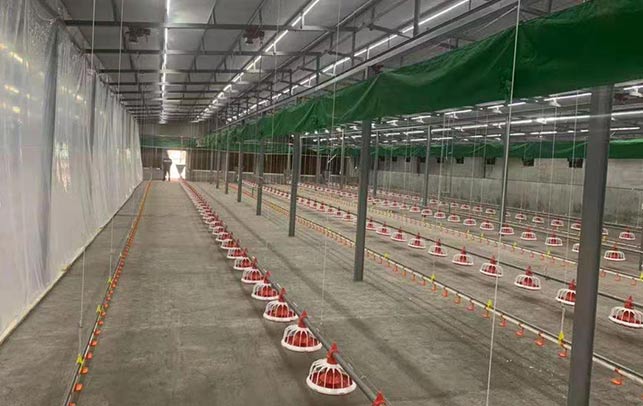How to Set Up a Chicken Farm in Uganda for Egg Production
Time : 2025-03-30
Embarking on the journey of setting up a chicken farm in Uganda for egg production can be both exciting and challenging. With the increasing demand for eggs in the local market, it presents a lucrative business opportunity. Whether you are a beginner or an experienced farmer, this guide will provide you with the necessary steps and tips to set up a successful chicken farm in Uganda.
Step 1: Research and Planning
Before diving into the world of chicken farming, it is essential to conduct thorough research and planning. This step will help you understand the market demand, potential challenges, and the necessary resources to start your chicken farm.
Market Demand
Start by researching the local market to understand the demand for eggs. Contact local supermarkets, restaurants, and wholesalers to gauge their requirements. Additionally, consider the growing population and urbanization in Uganda, which are contributing factors to the rising demand for eggs.
Challenges
Identify potential challenges that you may face in the chicken farming business. These may include diseases, feed availability, and market fluctuations. Preparing for these challenges will help you overcome them efficiently.
Resources
Assess the resources you need to start your chicken farm. This includes capital, land, equipment, and labor. Make a detailed list of everything you need and prioritize them based on urgency and importance.
Step 2: Choose the Right Location
The location of your chicken farm is crucial for its success. Here are some factors to consider when choosing a suitable location:
Accessibility
Ensure that your farm is easily accessible for transportation and delivery. Consider proximity to markets, feed suppliers, and veterinary services.
Security
Choose a location that is safe and secure. Chicken farms are susceptible to theft and animal attacks. A secure perimeter fence and security cameras can help protect your farm.
Topography
Select a location with good topography. Steep slopes can make it challenging to manage the chickens and collect eggs. Additionally, consider the availability of water sources for irrigation and drinking purposes.
Step 3: Design Your Chicken Coop
A well-designed chicken coop is essential for the health and productivity of your flock. Here are some key considerations:
Size
The size of your coop depends on the number of chickens you plan to keep. Ensure that each chicken has enough space to move around comfortably.
Layout
Design your coop with a clear layout. Include areas for feeding, nesting, and resting. Ensure that there are enough nest boxes for the hens to lay their eggs.
Ventilation and Lighting
Proper ventilation and lighting are crucial for maintaining a healthy environment in the coop. Use natural sunlight as much as possible and consider adding artificial lighting if needed.
Flooring and Bedding
Use a suitable flooring material that is easy to clean and provides insulation. Bedding materials like straw or wood shavings can help keep the coop clean and comfortable.
Step 4: Select the Right Breed
Choosing the right breed of chickens is essential for successful egg production. Here are some popular breeds in Uganda:
Layer Breeds
– Black Star
– Red Star
– Anvers
– White Leghorn
These breeds are known for their high egg production rates and adaptability to various climates.
Dual-Purpose Breeds
– Local Indigenous Breeds (e.g., Nsenga, Tunga)
– Buckeye
– Wyandotte
These breeds are suitable for both egg production and meat, making them a good choice for farmers who want to diversify their products.
Step 5: Feeding and Nutrition
Proper nutrition is crucial for healthy and productive chickens. Here are some feeding tips:
Balanced Diet
Ensure that your chickens receive a balanced diet that meets their nutritional requirements. You can use commercial feed or prepare a homemade diet using a variety of ingredients like maize, soybean meal, and vitamin supplements.
Water
Provide fresh, clean water to your chickens at all times. A waterer with a slow-flowing spout can help prevent contamination.
Feed Management
Store your feed in a cool, dry place to prevent spoilage. Monitor the consumption of your chickens and adjust their feed accordingly.
Step 6: Health Management
Maintaining the health of your chickens is essential for a successful chicken farm. Here are some key health management practices:
Vaccination
Vaccinate your chickens against common diseases like新城疫 (Newcastle Disease), 禽痘病 (Fowl Pox), and 腹水 (Ascites). Consult with a veterinarian for the recommended vaccination schedule.
Biosecurity
Implement biosecurity measures to prevent the spread of diseases. This includes segregating new chickens from the existing flock, controlling access to the farm, and regularly cleaning and disinfecting the coop.
Regular Health Checks
Regularly monitor the health of your chickens by checking for signs of disease, such as changes in appetite, feather condition, and posture. Consult with a veterinarian if you notice any health issues.
Step 7: Marketing and Distribution
Once you have established a steady supply of eggs, it is time to market and distribute them. Here are some strategies:
Direct Sales
Sell your eggs directly to consumers at local markets, farm gate sales, or through social media platforms.
Wholesalers
Approach local wholesalers and retailers to distribute your eggs in bulk.
Partnerships
Form partnerships with restaurants, hotels, and other businesses that require a regular supply of eggs.
Conclusion
Setting up a chicken farm in Uganda for egg production requires careful planning, dedication, and knowledge. By following these steps and best practices, you can establish a successful and sustainable chicken farm that meets the growing demand for eggs in the local market.











